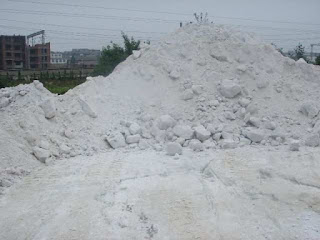Feeding and Conveying
Feeding
In a mineral processing plant, Feeders are necessary whenever we want to deliver a uniform
flow of dry or moist fractions of rock or minerals.
Generally they
are categorised by the size of material to be fed, see below.
Primary Feeders
Capacity:700 -
5000 t/h apron feeder
Capacity 300 -
1200 t/h, vibrating feeder
“In circuit” feeders
Wobbler feeders
Feeding and
scalping - when things get sticky!
Conveying
belt Conveyors are
selected from 4 key parameters:
•
Tonnage
•
Size of material
•
Inclination
•
Distance
We also must
consider wear in operation
and the
environment (dust, heat, oil or chemicals etc)
Conveyor belts
Although the
conveyor structure is important, most of the conveying work falls back on the
conveyor belt, exposed to the material.
Flat belts are dominating,
conveying up to a lifting or lowering angle of approx. 18°. Depending
on duty the belts are reinforced with different materials (Polyester/ Polyamide,
Aramid fibres or mesh net Steel Cords) in 2-5 plies, protected by a top cover
of 2-6mm thickness.
The polymer
material in the belt (mainly rubber) is selected according to appearance of
heavy wear, heat, flames, oil etc.
Profile belts must
be used when lifting angle is exceeding 18° . With a limitation of approx. 30°
different profiles of the top cover must be selected to prevent bulk material
or unit loads from sliding backward. Otherwise reinforcement and material
selection criteria are similar as for flat belts above.
Belt conveyor and service points
The conveyors
are the working horses of every dry processing plant in mineral processing, of
key importance to keep the process flow stable.
Pictures below
indicate the vital parts of the conveyor and the critical service points to be
checked regularily for reliable operation.
Service points











评论
发表评论